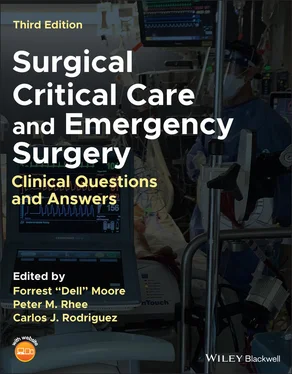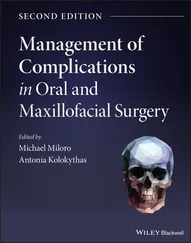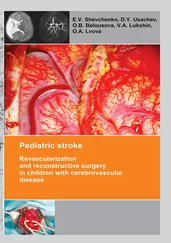Surgical Critical Care and Emergency Surgery
Здесь есть возможность читать онлайн «Surgical Critical Care and Emergency Surgery» — ознакомительный отрывок электронной книги совершенно бесплатно, а после прочтения отрывка купить полную версию. В некоторых случаях можно слушать аудио, скачать через торрент в формате fb2 и присутствует краткое содержание. Жанр: unrecognised, на английском языке. Описание произведения, (предисловие) а так же отзывы посетителей доступны на портале библиотеки ЛибКат.
- Название:Surgical Critical Care and Emergency Surgery
- Автор:
- Жанр:
- Год:неизвестен
- ISBN:нет данных
- Рейтинг книги:3 / 5. Голосов: 1
-
Избранное:Добавить в избранное
- Отзывы:
-
Ваша оценка:
- 60
- 1
- 2
- 3
- 4
- 5
Surgical Critical Care and Emergency Surgery: краткое содержание, описание и аннотация
Предлагаем к чтению аннотацию, описание, краткое содержание или предисловие (зависит от того, что написал сам автор книги «Surgical Critical Care and Emergency Surgery»). Если вы не нашли необходимую информацию о книге — напишите в комментариях, мы постараемся отыскать её.
Surgical Critical Care and Emergency Surgery Surgical Critical Care and Emergency Surgery,
Surgical Critical Care and Emergency Surgery
Surgical Critical Care and Emergency Surgery — читать онлайн ознакомительный отрывок
Ниже представлен текст книги, разбитый по страницам. Система сохранения места последней прочитанной страницы, позволяет с удобством читать онлайн бесплатно книгу «Surgical Critical Care and Emergency Surgery», без необходимости каждый раз заново искать на чём Вы остановились. Поставьте закладку, и сможете в любой момент перейти на страницу, на которой закончили чтение.
Интервал:
Закладка:
3 A 27‐year‐old man is undergoing exploratory laparotomy after presenting with a gunshot wound to the left flank. He is currently hemodynamically stable. The operative team has concern for possible ureteral injury and asks that methylene blue be administered for identification of possible urine leak. Shortly after administration, the patient desaturates to SpO2 of 82% with remaining hemodynamics remaining appropriate. What is the management for the etiology of this patient’s desaturation event?Perform a left tube thoracostomy.Immediate bronchoscopy.Abort the procedure.Manual bag mask ventilation.Watch and wait without immediate intervention.The multiple uses of methylene blue have been established including use in methemoglobinemia treatment as well as potential use in vasoplegic syndrome. In the operating room, methylene blue is often used to evaluate renal function and for potential leak in urologic procedures. However, one of the adverse effects of methylene blue is to decrease pulse oximetry readings.Pulse oximeters are made up of a side containing two light emitting diodes that emit at 660nm and 940nm detecting deoxygenated and oxygenated hemoglobin, respectively. The light is captured after passing through the arteries in the finger by a probe on the other side of the oximeter. This is then passed through and alternating current amplifier to block nonpulsatile wave forms from veins. The ratio of oxygenated to total hemoglobin is used to calculate SpO2. When administered, methylene blue transiently decreases the detected oxygenated hemoglobin as the methemoglobin fraction, usually a small percentage of total circulating hemoglobin, increases until processed out through the renal system. Therefore, for this patient, aborting the procedure is not necessary. The desaturation is transient and not caused by mucus plugging, which may require bronchoscopy, pneumothorax, which would require tube thoracostomy, or significant atelectasis, which may require bag mask ventilation.Answer: EClifton J and Leikin JB . Methylene blue. Am J Ther. 2003; 10(4): 289–291.Rong LQ, Mauer E, Mustapich TL, et al. Characterization of the rapid drop in pulse oximetry reading after intraoperative administration of methylene blue in open thoracoabdominal aortic repairs. Anesth Analg. 2019; 129(5): 142–145.
4 A 65‐year‐old woman is in the post‐anesthesia care unit following elective inguinal hernia surgery. Shortly after arriving, she is noted to have increasing shortness of breath and wheezing requiring administration of a nebulized beta agonist. The patient has a known history of COPD. Which of the following pulmonary function test patterns would be expected in a patient with COPD?FEV1 decreased; FVC decreased/normal; FEV1/FVC ratio decreased.FEV1 increased; FVC decreased; FEV1/FVC ratio increased.FEV1 decreased/normal; FVC decreased; FEV1/FVC ratio normal.FEV1 increased; FVC increased; FEV1/FVC ratio increased.FEV1 decreased; FVC decreased; FEV1/FVC ratio decreased.Pulmonary function testing is often used in preoperative evaluation, particularly prior to thoracic procedures. These can be used, in addition to history and exam, to identify obstructive versus restrictive lung processes. Three of the important measures are the forced vital capacity (FVC) – the total volume forcefully expired after maximal inspiratory effort; forced expiratory volume in 1 second (FEV1) – the volume of air forcefully expired after maximal inspiratory effort in 1 second; the FEV1/FVC ratio. In evaluating spirometry results, first step is to interpret the FEV1/FVC ratio. If less than the lower limit of normal, an obstructive pattern is suspected. If greater than lower limit of normal, the FVC is evaluated and if less than lower limit of normal, a restrictive process is considered. Obstructive diseases include COPD, asthma, and emphysema while restrictive lung diseases include neuromuscular disorders and interstitial lung diseases.Answer: ABarreiro TJ and Perillo I . An approach to interpreting spirometry. Am Fam Physician. 2004; 69(5): 1107–1115.Pellegrino R, Viegi G, Brurasco V, et al. Interpretative strategies for lung function tests. Eur Respir J. 2005; 26:948–968.
5 You are caring for a patient in your SICU who is post total abdominal colectomy and end ileostomy. Ileostomy output has been in excess of 1.5L daily with concomitant acute kidney injury noted on basic metabolic panel with continued required resuscitation. Which of the following represents the primary relationships between alveolar pressure (PA), pulmonary arterial pressure (Pa), and pulmonary venous pressure (Pv) within the lung in a state of hypovolemia?Pa > Pv > PA and PA > Pv > PaPA > Pv > Pa and Pa > PA > PvPa > PA > Pv and PA > Pa > Pv PA > Pa > Pv and Pv > Pa > PAPa > PA > Pv and Pa > Pv > PAThe relationship between alveolar pressure, pulmonary arterial pressure, and pulmonary venous pressure represents the West zones of the lung. Zone 1, not seen in normal physiology, signifies alveolar dead space secondary to increased alveolar pressure causing arterial collapse (PA > Pa > Pv). Zone 2 represents pulsatile perfusion (Pa > PA > Pv) typically the upper portions of lung in a typical, upright person. Zone 3 represents the bulk of healthy lung tissue with continuous blood flow without extrinsic compression (Pa > Pv > PA). In a hypovolemic individual, as in this patient, decreased circulating volume converts Zone 3 tissue to Zone 1 and 2, increasing dead space.Answer: CWest JB and Dollery CT . Distribution of blood flow and the pressure‐flow relations of the whole lung. J Appl Physiol. 1965; 20(2): 175–183.For questions 7–10, use the following figure to match the clinical scenario to the appropriate flow volume loop:
6 A 42‐year‐old man presents to the ICU following intubation for COPD exacerbation.
7 An 18‐year‐old woman diagnosed on bronchoscopy with intratracheal lipoma.
8 A recovered COVID‐19 patient who develops tracheal stenosis following a 2 week intubation.
9 A 75‐year‐old male who undergoes emergent intubation following development of angioedema found to have R vocal cord paralysis.Flow volume loops involve plotting inspiratory and expiratory flow on the Y‐axis with volume on the X‐axis, ideally during maximally forced inspiratory and expiratory effort. Flow volume loops are component of the information presented on mechanical ventilators as well and can aid in the diagnosis of airway obstruction. The normal loop is seen in loop A above representing a complete inspiratory and expiratory breath. Loop B demonstrates variable extrathoracic obstruction with a flattening of the inspiratory component. This is due to a combination of atmospheric extraluminal pressure and negative intraluminal pressure exacerbating extrathoracic obstruction as in vocal cord dysfunction and mobile tumors such as lipoma. Intrathoracic variable obstruction, such as with bronchogenic cysts or intrathoracic tracheomalacia, is demonstrated by flattening of the expiratory component, as seen in loop C. Pleural pressure becomes positive relative to airway pressure exacerbating obstruction during expiration. Loop D demonstrates fixed airway obstruction, as with tracheal stenosis, causing flattening of both components of the loop. Finally, loop E demonstrates lower airway obstruction as seen in COPD and asthma. A scooped‐out appearance to the loop comes from premature airway closure as heterogeneity of flow in expiration, i.e., areas with higher elastic recoil and lower airway resistance empty faster than diseased areas.Answers: 6‐E, 7‐B, 8‐C, 9‐BLoutfi SA and Stoller JK . Flow‐volume loops. UpToDate. Retrieved November 16, 2020 from https://www.uptodate.com/contents/flow‐volume‐loops?search=flow%20volume%20loops&source=search_result&selectedTitle=1~59&usage_type=default&display_rank=1Pellegrino R, Viegi G, Brusasco V, et al. Interpretative strategies for lung function tests. Eur Respir J. 2005; 26(5): 948–968.
Читать дальшеИнтервал:
Закладка:
Похожие книги на «Surgical Critical Care and Emergency Surgery»
Представляем Вашему вниманию похожие книги на «Surgical Critical Care and Emergency Surgery» списком для выбора. Мы отобрали схожую по названию и смыслу литературу в надежде предоставить читателям больше вариантов отыскать новые, интересные, ещё непрочитанные произведения.
Обсуждение, отзывы о книге «Surgical Critical Care and Emergency Surgery» и просто собственные мнения читателей. Оставьте ваши комментарии, напишите, что Вы думаете о произведении, его смысле или главных героях. Укажите что конкретно понравилось, а что нет, и почему Вы так считаете.












